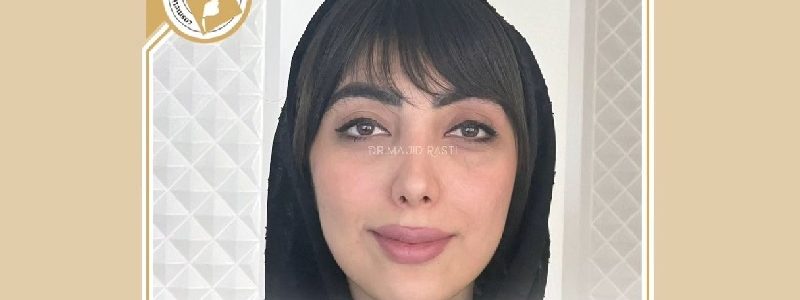When does the nose take its final shape after surgery?
The final form of rhinoplasty | A period of time is needed after rhinoplasty surgery . until the nose achieves the desired shape. Now here is the question . When does the nose take its final shape after the operation? Stay with us to answer this question.
Many people are not satisfied with their nose and want to change its appearance. The best and most appropriate way to change the shape of the nose is to perform cosmetic surgery . which is suitable for both fleshy noses and bony noses.
Stay with us with interesting and readable content ØŊÚĐØŠØą Ų
ØŽÛØŊ ØąØ§ØģØŠÛ Of nose surgery Ų ŲŲŲ ØŠØŪØĩØĩ ØŽØąØ§ØÛ ŲūŲاØģØŠÛÚĐ Ø§ØĩŲŲاŲ :

When does the nose take its final shape after surgery?
The decision to undergo rhinoplasty is an important and deeply personal choice . which can have profound effects on a person's appearance, self-confidence and quality of life. After rhinoplasty, patients begin a transformative journey of healing and self-discovery . And they look forward to the moment . that their nose takes its final and desired shape.
Rhinoplasty is a harmonious combination of art and science where surgical skills, patient anatomy, and healing dynamics converge to shave and refine the contours of the nose.. Understanding the timeline and nuances of post-operative nasal development is essential for patients and surgeons alike . and guides expectations, decisions, and strategies for postoperative care.
The initial recovery phase of the immediate postoperative period
Immediately after rhinoplasty, the nose may appear swollen, bruised, and slightly deviated due to the surgical trauma and the body's natural inflammatory response.. Nasal splints, packing, and external dressings may also help with temporary changes in the shape and contour of the nose.
Early recovery stage (The first few weeks)
In the initial weeks after rhinoplasty, the swelling and bruising will gradually decrease, allowing the underlying structures of the nose to appear.. While the improvement in the appearance of the nose may be noticeable during this time, the nose is still in the early stages of healing and the final results have yet to be revealed..
Intermediate recovery stage (A few months)
As the weeks progress, most of the swelling resolves and the nasal tissues continue to settle and regenerate. While the nose may begin to resemble its final shape during this intermediate healing phase, subtle changes and modifications may occur as the tissues continue to adjust and settle into place..
Final recovery stage (Six months to a year)
The final stage of recovery after rhinoplasty occurs within six months to one year after the surgery. During this time, the remaining swelling will gradually disappear and the nasal tissues will stabilize, allowing the nose to assume its permanent shape and contour..
Patients usually experience a significant improvement in the appearance and symmetry of the nose as the healing process reaches its peak.

Individual variability
It is important to understand that the timeline for achieving final results after rhinoplasty varies from patient to patient. Factors such as the extent of surgery, the rate of individual recovery and the skill of the surgeon all play a role in the final outcome. While some patients may notice significant improvements within a few months, others may need more time for the nose to completely achieve their desired shape..
Patience and care after the operation. Patience and care after the operation
Patience is very important during the post-operative period, as the final results of rhinoplasty may take time. Following the post-operative care instructions provided by your surgeon, including proper wound care, avoiding trauma to the nasal area, and attending follow-up appointments, can help facilitate a smooth and successful recovery..
-
Communicate with your surgeon
It is important to maintain open communication with the surgeon throughout the healing process. Your surgeon can provide guidance, reassurance, and adjustments to ensure your post-operative experience is as comfortable and beneficial as possible..
As a result, the nose takes its final shape after surgery through a gradual and transformative process that unfolds over several months to a year.. While the immediate post-operative period may be marked by temporary changes and swelling, patience, proper post-operative care and communication with the surgeon are the keys to achieving optimal results and enjoying the long-term benefits of rhinoplasty..
-
The cares that should be taken for the ultimate shape of the nose .
Achieving the final shape of the nose, whether through surgical intervention or non-invasive treatments, is a multifaceted process that requires careful consideration, patience and commitment to optimal care practices.. From pre-operative preparation to post-operative recovery and long-term maintenance, each step of the process plays an important role in sculpting and maintaining the desired aesthetic beauty of the nose..
Factors affecting the final shape of the nose
The final shape of the nose is a complex interaction of anatomical and surgical factors, each of which has a role in the final shape and beauty result. From the inherent features of nasal anatomy to the techniques used during surgical intervention, numerous variables affect the final shape of the nose.. Let's examine the multifaceted factors that play a major role in shaping nose lines :
Descriptive considerations
The inherent structure and composition of the nose anatomy lays the foundation for the final shape of the nose. Factors such as the size and position of the nasal bones, cartilage framework, definition of the nasal tip, and overall facial proportions contribute to the initial aesthetics of the nose and influence the surgical approach required to achieve the desired results..
Surgical technique and expertise
The skill and expertise of the plastic surgeon in performing this operation significantly affects the final shape of the nose. Surgeons use a variety of techniques, including open rhinoplasty, closed rhinoplasty, and revision rhinoplasty, to address aesthetic concerns and specific functional issues while maintaining nasal symmetry, balance, and harmony..
Patient goals and expectations
Patient opinions and aesthetic preferences play an important role in shaping the final result of rhinoplasty. Clear communication between patient and surgeon about desired changes, realistic expectations, and aesthetic goals ensures alignment and fosters a collaborative approach to achieving optimal results..
Planning and customization of surgery
Adjusting the surgical plan to the unique needs and anatomy of each patient is essential to achieve optimal results. Surgeons evaluate factors such as nasal symmetry, nasal tip protuberance, dorsal profile, and nostril shape to create a customized treatment plan that addresses specific concerns and achieves harmonious facial proportions..
Tissue regeneration
The process of tissue repair and reconstruction after rhinoplasty continues for a long time after the operation is completed and significantly affects the final shape of the nose.. As the swelling and tissues settle down, the lines of the nose are gradually corrected and the real result of the surgery appears over time..

Postoperative care and compliance
Adherence to postoperative care instructions, including proper wound care, medication management, and follow-up appointments, is critical for optimal healing and maintenance of the final shape of the nose.. Patients who follow their surgeon's instructions closely are more likely to achieve favorable results and minimize the risk of complications..
Genetic and environmental factors
Genetic predispositions and environmental influences can also affect the final shape of the nose. Factors such as skin thickness, skin elasticity, and the presence of scar tissue may affect the way the nose is repaired and the long-term stability of the surgical results..
Review and touch methods
In some cases, revision or correction may be needed to correct and optimize the final shape of the nose. These additional interventions allow surgeons to address any residual asymmetries, contour irregularities, or functional concerns that may arise during the healing process..




























